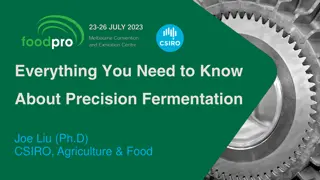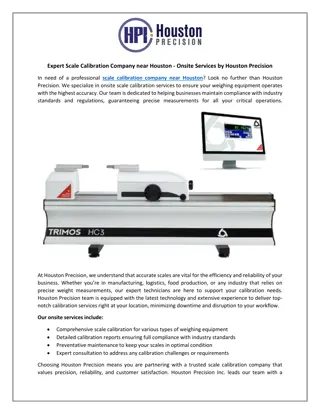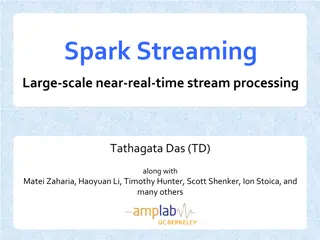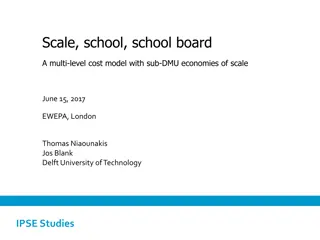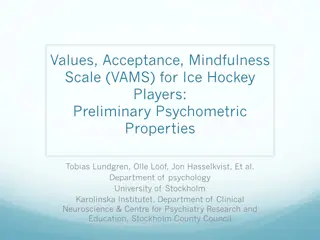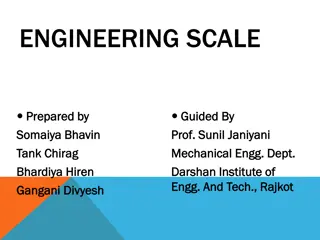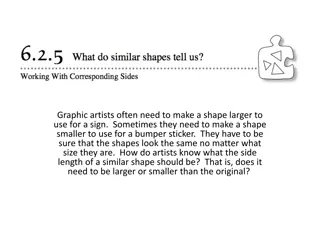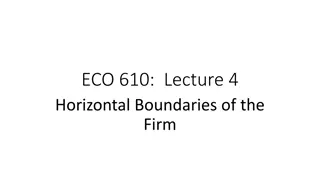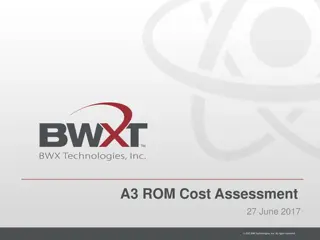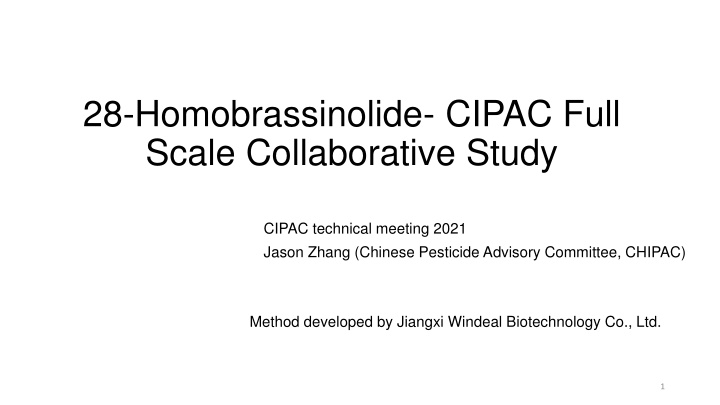
Detailed Study on 28-Homobrassinolide Collaborative Research
Explore the comprehensive study on 28-Homobrassinolide carried out in a collaborative manner, including general information, background, and participants involved in the research. Discover the chemical properties, formulation, stability, and solubility of the compound, as well as the diverse group of laboratories and countries contributing to the study.
Download Presentation

Please find below an Image/Link to download the presentation.
The content on the website is provided AS IS for your information and personal use only. It may not be sold, licensed, or shared on other websites without obtaining consent from the author. If you encounter any issues during the download, it is possible that the publisher has removed the file from their server.
You are allowed to download the files provided on this website for personal or commercial use, subject to the condition that they are used lawfully. All files are the property of their respective owners.
The content on the website is provided AS IS for your information and personal use only. It may not be sold, licensed, or shared on other websites without obtaining consent from the author.
E N D
Presentation Transcript
28-Homobrassinolide- CIPAC Full Scale Collaborative Study CIPAC technical meeting 2021 Jason Zhang (Chinese Pesticide Advisory Committee, CHIPAC) Method developed by Jiangxi Windeal Biotechnology Co., Ltd. 1
GENERAL INFORMATION Common name Chemical Name 28-Homobrassinolide (5S,6R)-10-((2S,3R,4R,5S)-5-ethyl-3,4-dihydroxy-6-methylheptan-2-yl)-5,6-dihydroxy- 7a,9a-dimethyltetradecahydro-1H-benzo[c]indeno[5,4-e]oxepin-3(12bH)-one C29H50O6 82373-95-3 Empirical formula CAS No. Structure RMM m.p. Solubility (g/L, 20 ) 494.8 256~257 C In water 5mg/l, acetonitrile 1.3g/l, ethanol 5.2g/l, methanol 2.7g/l at 20 C. Description Stability Formulation White powder Stable in neutral and weak alkaline condition but hydrolysed in acidic conditions Emulsifiable concentrates, soluble concentrates 2
BACKGROUND OF THE STUDY In February 2020, small scale collaboration was initiated. Two technical samples, two SL samples and one EC sample were sent to the following 6 participants in February 2020. Lab No.Name of responsible person Lab Name Country Jiangxi Windeal Biotechnology Co., Ltd. - Quality Department Kaifeng Yitian Biotechnology Co., Ltd. - quality control department Liu ShuZhen Jiangxi, China 1 Henan, China Sun Fengying 2 Chen Mirror GreenTech Laboratory Co., Ltd. Shanghai, China 3 Jiangxi Buffett Chemical Co., Ltd. - quality control department Shandong Huihan Biotechnology Co., Ltd. - analysis room Guangdong Zhongxun Agricultural Technology Co., Ltd. - PTD Center Mei Quanfu Jiangxi, China 4 Chang Feng Shandong, China 5 Guangdong, China Liu Xinsheng 6 The report of small scale collaboration was discussed and passed on virtual CIPAC meeting last year. 3
PARTICIPANTS Two technical samples, two SL samples and one EC sample were sent to 18 participants in November 2020. By the end of April 2021, 16 participants provided their results, another 2 participants did not reply in time. Name of Lab Name City, Country responsible person 1 Helen Karasali Benaki Phytopathological Institute Greece 2 Denis Carr Department of Agriculture, Food and the Marine Ireland 3 Wendy Wang Jiangsu Agrochem Laboratory Co., Ltd. China 4 Cornel Grecu Laboratory of Alchimex Romania National Institute of Health Department of Environment and Health ECASS Section 5 Angela Santilio Italy 6 Huang Liang Anhui Fengle Agrochemical Co., Ltd. Product Testing Center Auhui, China 4
Name of responsible person Lab Name City, Country Agricultural Chemicals Inspection Station, Food and Agricultural Materials Inspection Center 7 UENO Takanori Japan Walloon Agricultural Research Centre (CRA-W) Knowledge and Valorization of Products Department (D4) Protection, control products and residues Unit (U10) 8 Vanessa Lecocq Belgium 9 Zhang Juntao Helm China Co., Ltd. China 10 Xu Aiping Laprode (Zhejiang) Analysis Co., Ltd Zhejiang, China 11 Agus Salim Laboratorium PT Agriculture Construction (AGRICON) Indonesia 12 He Zhiyu Guizhou JAD technology co., LTD Guizhou, China Shandong Huihan Biotechnology Co., Ltd. - analysis room Kaifeng Yitian Biotechnology Co., Ltd. - quality control department 13 Chang Feng Shandong, China 14 Sun Fengying Henan, China Guangdong Zhongxun Agricultural Technology Co., Ltd. - PTD Center Jiangxi Windeal Biotechnology Co., Ltd. - Quality Department 15 Liu Xinsheng Guangdong, China 16 Liu ShuZhen Jiangxi, China 5
ANALYTICAL METHOD Outline of Method After derivatization with Phenylboronic Acid, the 28-Homobrassinolide content of the samples is determined by high performance liquid chromatography on ODS-C18 film stainless column with UV detector at 220 nm, quantified by external standard method. 250mm x 4.6 mm (id), packed with ODS-C18, or equivalent acetonitrile+ water = 80 + 20 v/v Column: Eluent: Column Temperature: 25 Flow Rate: 1.0 ml/min Detector Wavelength Retention time: Injection Volume: 220nm 10 L Approximately 18.6min 6
ANALYTICAL METHOD Preparation of the test substance solution and determination Preparation of standard solution: prepare standard solution in duplicate. Weigh 0.01g (to the nearest 0.1mg) 28- Homobrassinolide standard into 25ml volumetric flask, dissolved by 15ml methanol. Add 4ml phenylboronic acid solution (6mg/ml phenylboronic acid was prepared with methanol before), react 30min in thermostat at 50 . Allow the solution to cool to ambient temperature and fill to the mark with methanol. Mix thoroughly and place the flask in an ultrasonic bath for 5 min, then filter the solution through a 0.45 m filter membrane prior to analysis. Preparation of sample solution: prepare sample solution in duplicate. Weigh (to the nearest 0.1mg) sufficient sample to contain about 10mg 28-Homobrassinolide into 25ml volumetric flask, dissolved by 15ml methanol. Add 4ml phenylboronic acid solution, react 30min in thermostat at 50 . Allow the solution to cool to ambient temperature and fill to the mark with methanol. Mix thoroughly and place the flask in an ultrasonic bath for 5 min, then filter the solution through a 0.45 m filter membrane prior to analysis. (Sample solutions S1 and S2) TC Determination: Inject in duplicate 10 L portions of each sample solution bracketing them by injections of the calibration solutions as follows: CA, S1, S1, CB, S2, S2, CA, etc. 7
ANALYTICAL METHOD Preparation of the test substance solution and determination Preparation of standard solution: prepare standard solution in duplicate. Weigh 0.01g (to the nearest 0.1mg) 28- Homobrassinolide standard into 25ml volumetric flask, dissolved by 15ml methanol. Add 4ml phenylboronic acid solution, react 30min in thermostat at 50 . Allow the solution to cool to ambient temperature and fill to the mark with methanol. Mix thoroughly and add 1ml solution into 10ml volumetric flask by pipette and fill to the mark with methanol. Mix thoroughly and place the flask in an ultrasonic bath for 5 min, then filter the solution through a 0.45 m filter membrane prior to analysis. SL Preparation of sample solution: prepare sample solution in duplicate. Weigh (to the nearest 0.1mg) sufficient sample to contain about 1mg 28-Homobrassinolide into 25ml volumetric flask. Add 4ml phenylboronic acid solution, react 30min in thermostat at 50 . Allow the solution to cool to ambient temperature and fill to the mark with methanol. Mix thoroughly and place the flask in an ultrasonic bath for 5 min, then filter the solution through a 0.45 m filter membrane prior to analysis. 8
ANALYTICAL METHOD Preparation of the test substance solution and determination Preparation of standard solution: prepare standard solution in duplicate. Weigh 0.01g (to the nearest 0.1mg) 28- Homobrassinolide standard into 25ml volumetric flask, dissolved by 15ml methanol. Add 4ml phenylboronic acid solution, react 30min in thermostat at 50 . Allow the solution to cool to ambient temperature and fill to the mark with methanol. Mix thoroughly and add 1ml solution into 10ml volumetric flask by pipette and fill to the mark with methanol. Mix thoroughly and place the flask in an ultrasonic bath for 5 min, then filter the solution through a 0.45 m filter membrane prior to analysis. EC Preparation of sample solution: prepare sample solution in duplicate. Weigh (to the nearest 0.1mg) sufficient sample to contain about 1mg 28-Homobrassinolide into 25ml volumetric flask, dissolved by 5ml methanol. Add 4ml phenylboronic acid solution, react 30min in thermostat at 50 . Allow the solution to cool to ambient temperature and fill to the mark with methanol. Mix thoroughly and place the flask in an ultrasonic bath for 5 min, then filter the solution through a 0.45 m filter membrane prior to analysis. 9
STUDY FORMAT Samples 28-Homobrassinolide Technical (SAMPLE A) 28-Homobrassinolide Technical (SAMPLE B) 28-Homobrassinolide Soluble Liquid (SAMPLE C) 28-Homobrassinolide Soluble Liquid (SAMPLE D) 28-Homobrassinolide Emulsifiable Concentrate (SAMPLE E) Protocol The samples were analyzed on two different days, each day involving duplicate injections of duplicate weights. Test and calibration solutions were prepared fresh on each day. The sample content was calculated using the mean value of the duplicate injections. 10
ANALYTICAL CONDITIONS Lab Number Analytical Conditions Laboratory 1 Column: SHIMADZU, Luna 5 m C18, 250 x 4.6 mm, Phenomenex S/N: 19-029626 Remarks: Flow rate was increased from 1ml/min to 1.3 ml/min. Column: SHIMADZU, Inertsil ODS-C18, 250mm x 4.6mm, 3 m Remarks: The particle size of the HPLC column used was 3 m. Column: Agilent 250mm*4.6mm (id), packed with ZORBAX SB-C18, 5 m Remarks: None Column: AkzoNobel, Kromasil 100-5C18 250 x 4.6mm, batch no. E95557 Remarks: None Column: RESTEK Roc C18 5 um; 250 x 4.6 mm Remarks: None Column: ODS-3 (Inertsil) 4.6mm*250mm*5 m, C/N.5020-01732 S/N.1A7184863 Remarks: None Column: NUCLEOSIL 5C18 (250 mm X 4.6 mm, particle size 5 m, Column No. L7A44) Remarks: None Column: Agilent Zorbax SB-C18, 5 m, 250 mm x 4.6 mm, Batch # B07021 Remarks: Flow rate was increased from 1ml/min to 1.5 ml/min. Column: SHIMADZU Shim-pack VP-ODS C18 250 mm x 4.6 mm Remarks: None Laboratory 2 Laboratory 3 Laboratory 4 Laboratory 5 Laboratory 6 Laboratory 7 Laboratory 8 Laboratory 9 11
Column: Agilent Eclipse Plus C18 ( 4.6mm*250mm*5m ) Remarks: None Column: Phenomenex Gemini NX-C18 110 , 250 x 4.6 mm (i.d) , particle size 5 m, S/No : H19-280905, Part No : OOG-4454-E0 Remarks: Flow rate was increased from 1ml/min to 1.4 ml/min. Column: GL Sciences Inertsil ODS-SP,250 mm 4.6 mm,5 m Remarks: Change the column temperature to 30 . Column: Agilent 5 TC-C18(2) 250 4.6mm Remarks: None Column: Elliot, 4.6mm 250mm E2616571 Remarks: None Column: XTERRA MS c18, 4.60mm*250cm, 03273926014075 Remarks: None Column: SHIMADZU, 4.6 250mm, 8FR98171 Remarks: None Laboratory 10 Laboratory 11 Laboratory 12 Laboratory 13 Laboratory 14 Laboratory 15 Laboratory 16 12
DEVIATIONS Flow rate 3 labs adjusted the flow rate to 1.3 ml/min, 1.4 ml/min and 1.5 ml/min respectively (Lab 1, Lab 8 and Lab 11) Column temp. 3 labs adjusted the column temp. to 30 degree Lab 4, Lab 9, Lab 12 Column 3 m particle size was used in Lab 2 13
DATA EVALUATION AND DISCUSSION ORINGINAL DATA (g/kg) 28- 28- 28- 28- 28-Homobrassinolide Sample E Homobrassinolide Sample A Homobrassinolide Sample B Homobrassinolide Sample C Homobrassinolide Sample D Day1 Day2 Day1 Day2 Day1 Day2 Day1 Day2 Day1 Day2 Laboratory 1 954.8 953.4 930.7 949.6 0.047 0.048 0.055 0.056 0.127 0.126 Laboratory 2 930.9 966.2 944.3 1000.7 0.051 0.053 0.051 0.054 0.097 0.111 Laboratory 3 952.0 957.0 951.9 951.5 0.039 0.039 0.042 0.042 0.097 0.096 Laboratory 4 947.0 945.8 944.4 948.7 0.043 0.042 0.049 0.048 0.105 0.105 Laboratory 5 870.9 923.6 885.9 951.0 0.050 0.050 0.050 0.060 0.120 0.120 Laboratory 6 951.7 951.1 952.3 952.5 0.033 0.032 0.040 0.041 0.088 0.087 14
28- 28- 28- 28- 28- Homobrassinolide Sample A Homobrassinolide Sample B Homobrassinolide Sample C Homobrassinolide Sample D Homobrassinolide Sample E Day1 Day2 Day1 Day2 Day1 Day2 Day1 Day2 Day1 Day2 Laboratory 7 943.8 939.1 941.8 943.0 0.034 0.033 0.039 0.038 0.086 0.083 Laboratory 8 966.6 966.7 949.7 933.4 0.038 0.038 0.048 0.045 0.096 0.093 Laboratory 9 953.4 954.9 953.1 954.3 0.035 0.035 0.042 0.042 0.089 0.090 Laboratory 10 947.9 936.7 950.1 945.2 0.033 0.033 0.040 0.040 0.085 0.085 Laboratory 11 950.0 946.3 947.2 947.3 0.039 0.038 0.046 0.043 0.091 0.090 Laboratory 12 947.7 947.0 934.8 934.1 0.032 0.032 0.040 0.038 0.070 0.073 Laboratory 13 953.0 950.7 953.1 952.1 0.040 0.040 0.040 0.040 0.100 0.100 Laboratory 14 952.4 954.2 952.0 953.9 0.042 0.040 0.042 0.040 0.101 0.101 Laboratory 15 955.7 953.8 951.7 953.9 0.040 0.041 0.040 0.041 0.102 0.102 Laboratory 16 952.7 956.6 954.0 952.6 0.040 0.041 0.040 0.041 0.101 0.101 15
DATA EVALUATION AND DISCUSSION MEAN VALUES (g/kg) 28-Homobrassinolide SAMPLE A 28-Homobrassinolide SAMPLE B 28-Homobrassinolide SAMPLE C 28-Homobrassinolide SAMPLE D 28-Homobrassinolide SAMPLE E Laboratory 1 954.1 940.2 0.048 0.056 0.127 Laboratory 2 948.6 972.5 0.052 0.053 0.104 Laboratory 3 954.5 951.7 0.039 0.042 0.097 Laboratory 4 946.4 946.6 0.043 0.049 0.105 897.2 +/++ 918.4+ Laboratory 5 0.050 0.055 0.120 Laboratory 6 951.4 952.4 0.033 0.041 0.088 + Gubbs Test straggler ++Gubbs Test outlier 16
28- Homobrassinolide SAMPLE A 28- Homobrassinolide SAMPLE B 28- Homobrassinolide SAMPLE C 28- Homobrassinolide SAMPLE D 28- Homobrassinolide SAMPLE E Laboratory 7 941.5 942.4 0.034 0.039 0.085 Laboratory 8 966.7 941.6 0.038 0.047 0.095 Laboratory 9 954.2 953.7 0.035 0.042 0.090 Laboratory 10 942.3 947.7 0.033 0.040 0.085 Laboratory 11 948.2 947.3 0.039 0.045 0.091 Laboratory 12 947.4 934.5 0.032 0.039 0.072 Laboratory 13 951.9 952.6 0.040 0.040 0.100 Laboratory 14 953.3 953.0 0.041 0.041 0.101 Laboratory 15 954.8 952.8 0.041 0.041 0.102 Laboratory 16 954.7 953.3 0.041 0.041 0.101 17
DATA EVALUATION AND DISCUSSION 947.9 16 11.516 16.849 32.245 47.177 1.215 1.777 2.016 0.882 Xm L Sr SR r R RSDr RSDR RSDR(Hor) HorRat Fig. 1 28-Homobrassinolide Sample A with outliers /stragglers 18
947.5 16 15.909 16.024 44.545 44.867 1.679 1.691 2.016 0.839 Xm L Sr SR r R RSDr RSDR RSDR(Hor) HorRat Fig. 2 28-Homobrassinolide Sample B with outliers /stragglers 19
0.040 16 0.00069 0.00608 0.00193 0.01702 1.724 15.300 9.193 1.664 Xm L Sr SR r R RSDr RSDR RSDR(Hor) HorRat Fig. 3 28-Homobrassinolide Sample C 20
0.044 16 0.00592 0.00592 0.01658 0.01658 4.754 13.410 9.047 1.482 Xm L Sr SR r R RSDr RSDR RSDR(Hor) HorRat Fig. 4 28-Homobrassinolide Sample D 21
0.097 16 0.00267 0.01360 0.00748 0.03808 2.739 13.958 8.031 1.738 Xm L Sr SR r R RSDr RSDR RSDR(Hor) HorRat Fig. 5 28-Homobrassinolide Sample E 22
SUMMARY Summary of the statistical evaluation with outliers /stragglers Xm = average sample A sample B sample C sample D sample E L = number of laboratories 947.9 16 11.516 16.849 32.245 47.177 1.215 1.777 2.016 0.882 947.5 16 15.909 16.024 44.545 44.867 1.679 1.691 2.016 0.839 0.040 16 0.00069 0.00608 0.00193 0.01702 1.724 15.300 9.193 1.664 0.044 16 0.00592 0.00592 0.01658 0.01658 4.754 13.410 9.047 1.482 0.097 16 0.00267 0.01360 0.00748 0.03808 2.739 13.958 8.031 1.738 Xm L Sr SR r R RSDr RSDR RSDR(Hor) HorRat Sr = repeatability standard deviation SR = reproducibility standard deviation RSDr = repeatability relative standard deviation RSDR = reproducibility relative standard deviation r = repeatability R = reproducibility RSDR(Hor) = Horwitz value calculated from: 2^(1 - 0.5log c) where c = the concentration of the analyte as a decimal fraction 23
Summary of the statistical evaluation without stragglers Xm = average sample A sample B sample C sample D sample E L = number of laboratories 947.7 15 11.893 17.404 33.300 48.731 1.255 1.836 2.016 0.911 947.5 16 15.909 16.024 44.545 44.867 1.679 1.691 2.016 0.839 0.040 16 0.00069 0.00608 0.00193 0.01702 1.724 15.300 9.193 1.664 0.044 16 0.00592 0.00592 0.01658 0.01658 4.754 13.410 9.047 1.482 0.097 16 0.00267 0.01360 0.00748 0.03808 2.739 13.958 8.031 1.738 Xm L Sr SR r R RSDr RSDR RSDR(Hor) HorRat Sr = repeatability standard deviation SR = reproducibility standard deviation RSDr = repeatability relative standard deviation RSDR = reproducibility relative standard deviation r = repeatability R = reproducibility RSDR(Hor) = Horwitz value calculated from: 2^(1 - 0.5log c) where c = the concentration of the analyte as a decimal fraction Sample A Results of Lab 5 eliminated. 24
Summary of the statistical evaluation without outliers Xm = average sample A sample B sample C sample D sample E L = number of laboratories 947.7 15 11.893 17.404 33.300 48.731 1.255 1.836 2.016 0.911 947.2 15 16.431 16.513 46.007 46.236 1.735 1.743 2.016 0.865 0.040 16 0.00069 0.00608 0.00193 0.01702 1.724 15.300 9.193 1.664 0.044 16 0.00592 0.00592 0.01658 0.01658 4.754 13.410 9.047 1.482 0.097 16 0.00267 0.01360 0.00748 0.03808 2.739 13.958 8.031 1.738 Xm L Sr SR r R RSDr RSDR RSDR(Hor) HorRat Sr = repeatability standard deviation SR = reproducibility standard deviation RSDr = repeatability relative standard deviation RSDR = reproducibility relative standard deviation r = repeatability R = reproducibility RSDR(Hor) = Horwitz value calculated from: 2^(1 - 0.5log c) where c = the concentration of the analyte as a decimal fraction Sample A Results of Lab 5 eliminated, Sample B Results of Lab 5 eliminated. 25
CONCLUSIONS For TC samples, the values of RSDR (reproducibility relative standard deviation) were less than Horwitz s value. As a reference, the HorRat values for TC were not greater than 1.0. For SL and EC samples, all HorRat values were not greater than 2.0. Considering very low concentration of SL and EC sample and no outliers or stragglers were detected in Grubbs test, the result is acceptable. No more than one value has been removed per sample. The validity of the results and the suitability of the analytical method are shown. This collaborative trial is acceptable. 26



